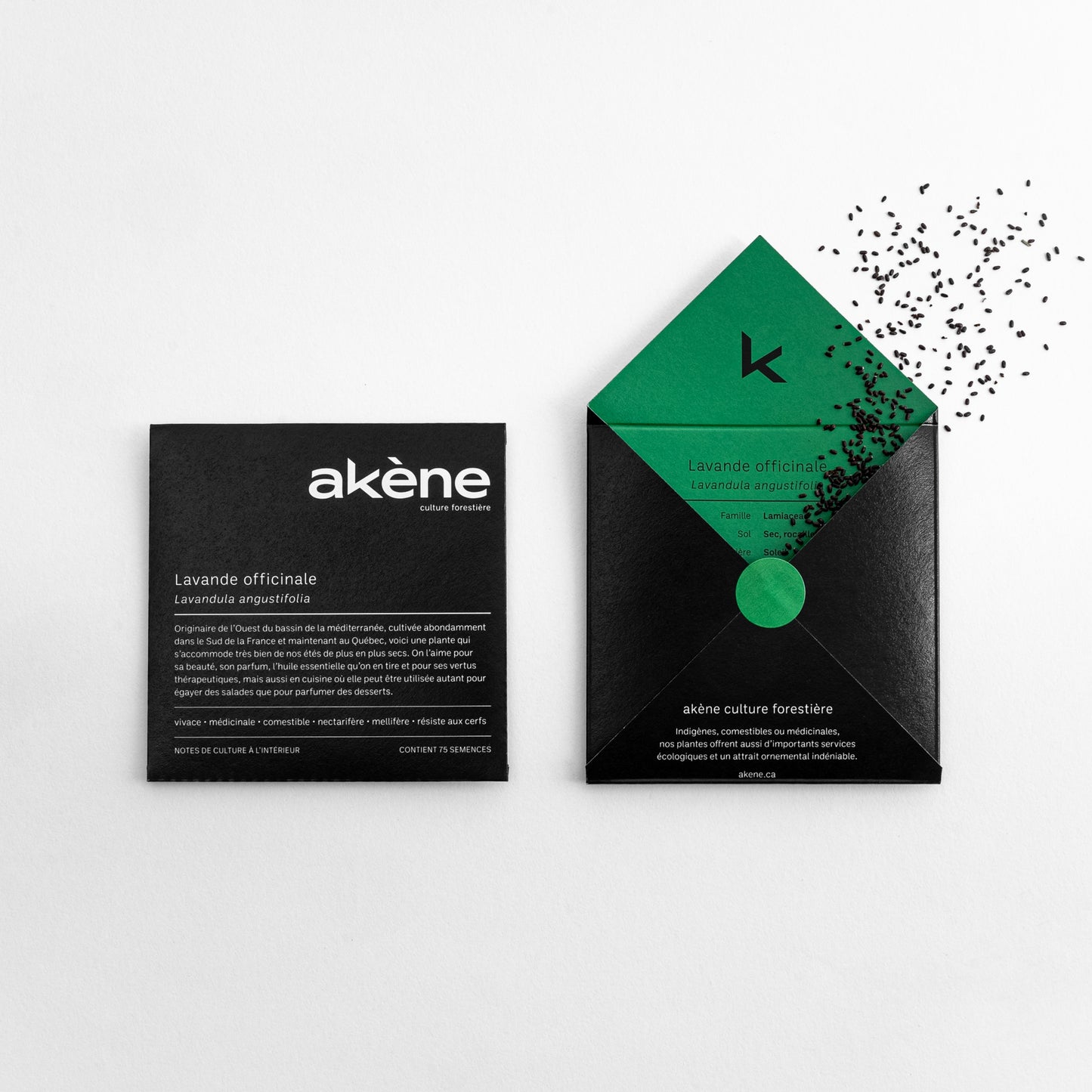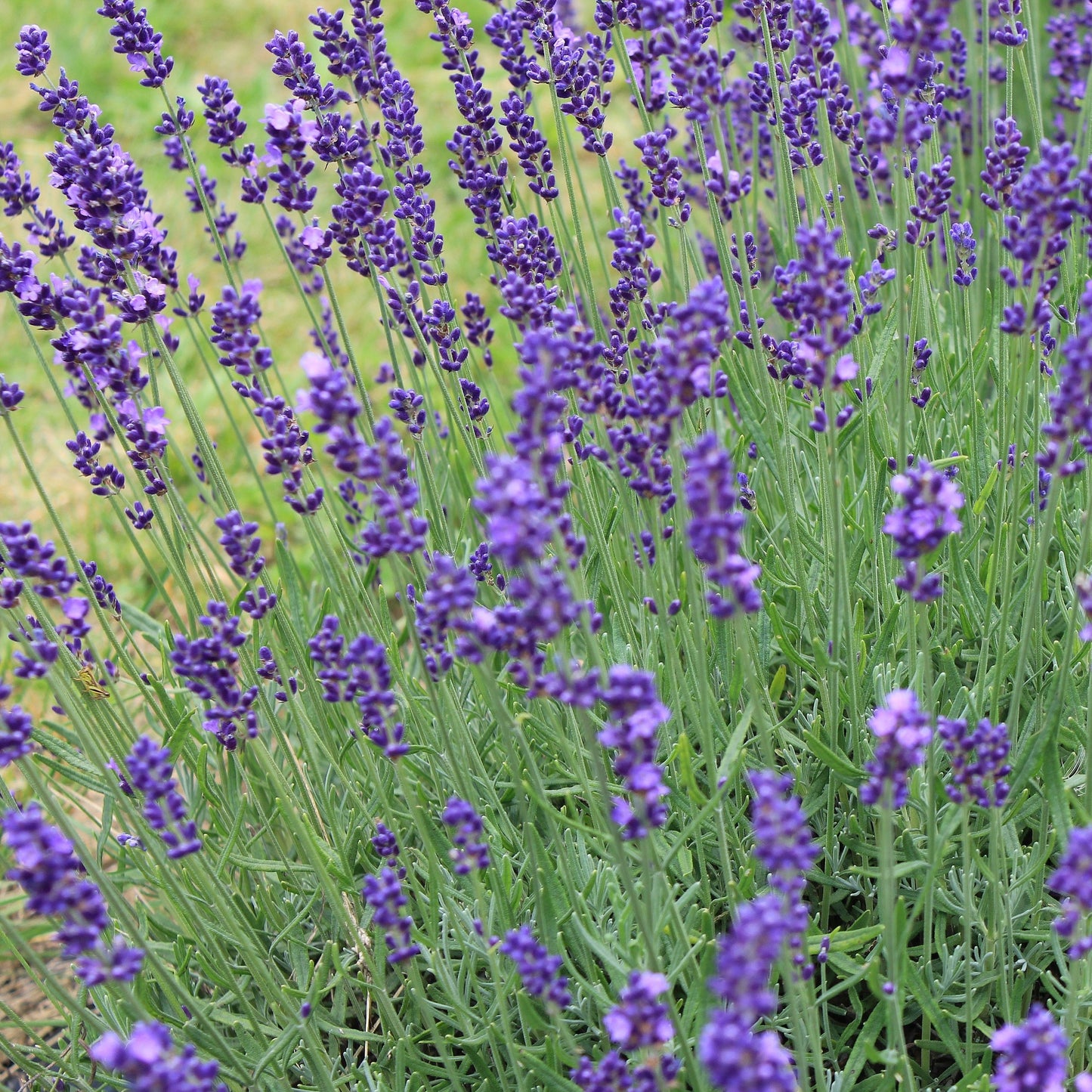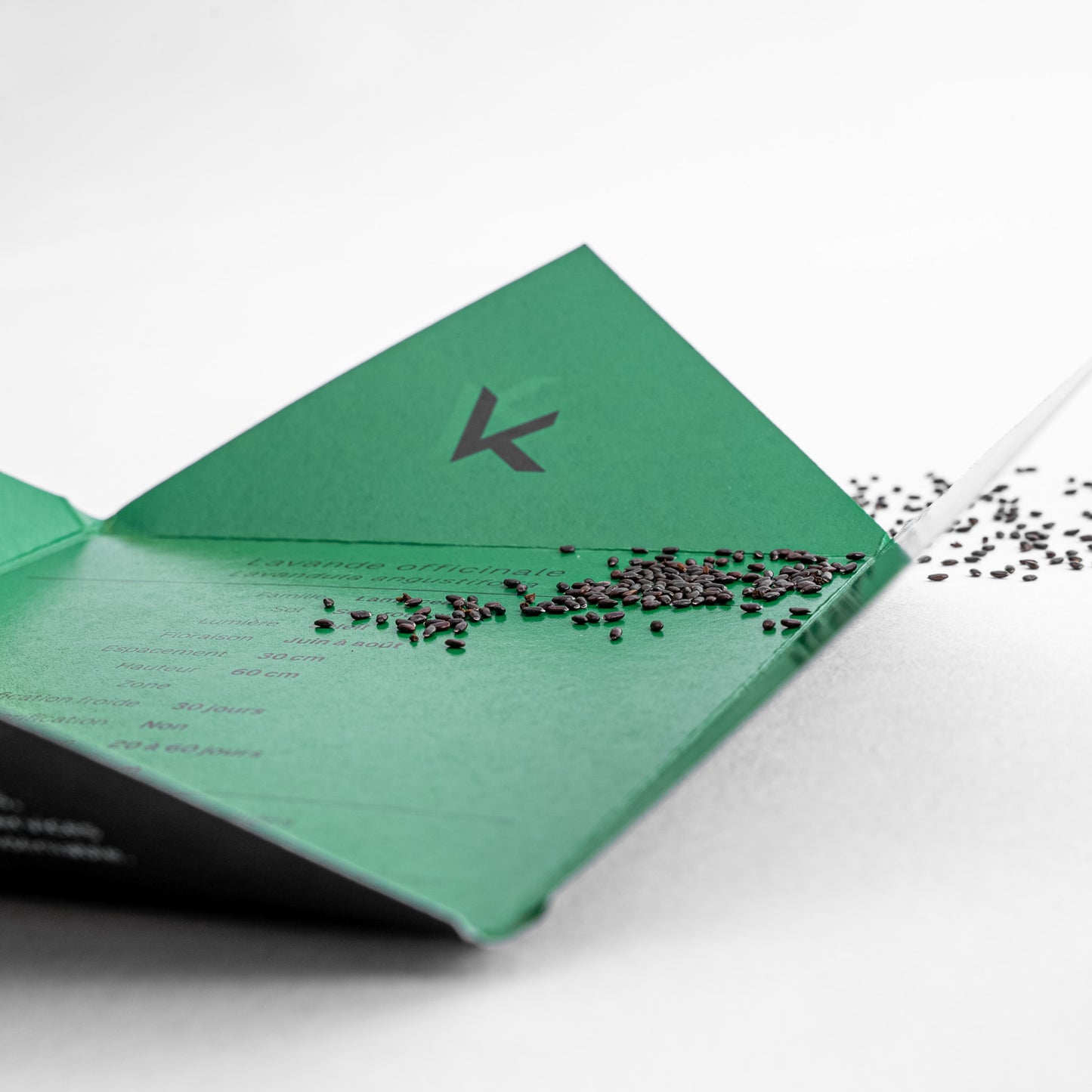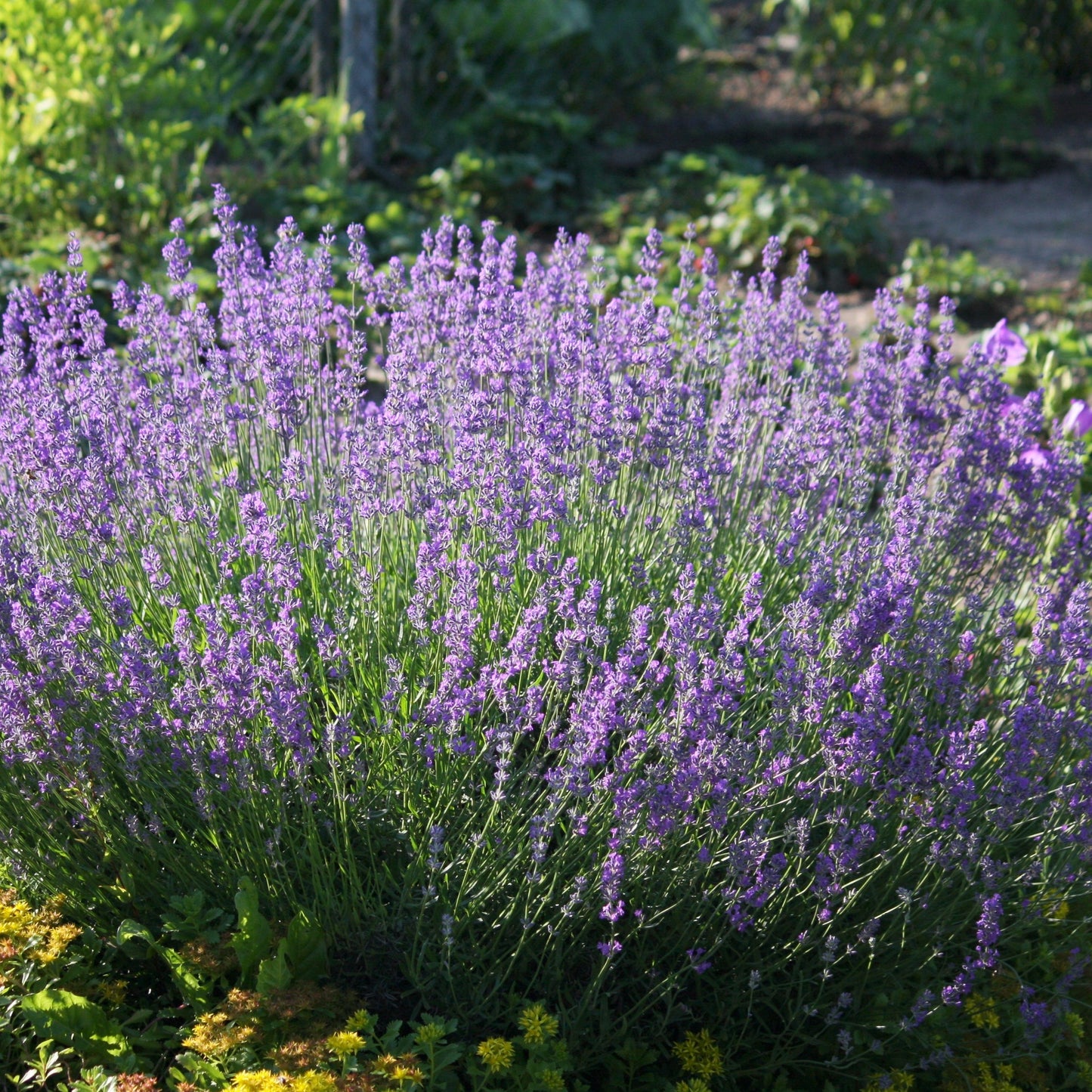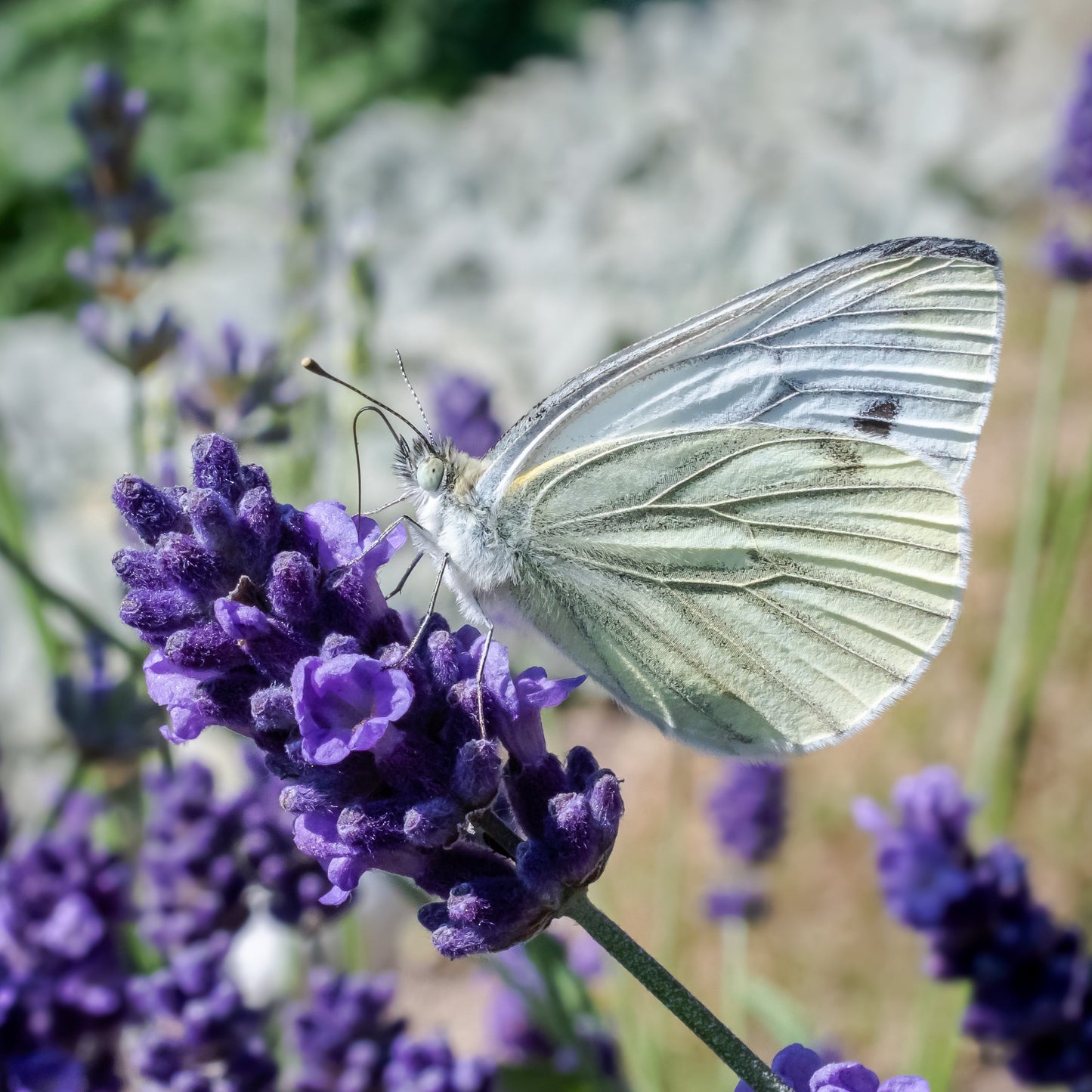This site is protected by hCaptcha and the hCaptcha Privacy Policy and Terms of Service apply.
For successful seedlings,
see the growing notes at the bottom of the page!
Lavender (Lavandula angustifolia), native to the western Mediterranean basin, is now cultivated in Quebec, where it adapts well to increasingly dry summers. This perennial plant is prized for its captivating fragrance, delicate beauty, and silvery foliage. It forms low, dense clumps, reaching up to 60 cm in height, with slender stems topped by blue-violet flowers that appear in summer. In addition to its ornamental uses, lavender fits well in aromatic or medicinal herb gardens. It prefers well-drained soil and a full-sun location, where it will thrive without intensive watering, making it an excellent choice for Quebec gardens.
Medicinal and Culinary Uses
Lavender has several medicinal properties. Its flowers and leaves are antiseptic, antispasmodic, cholagogue, carminative, sedative, and stimulant. In infusion or essential oil form, it is used to treat headaches, nervous and digestive disorders, and to promote restful sleep. Applied externally, it helps soothe muscle pain and skin inflammations, and its antiseptic properties make it a natural remedy for cuts and scrapes. In cooking, the flowers can be used to add a unique flavour to salads and desserts, making this plant as versatile as it is attractive.
Ecological Roles
Lavender attracts numerous pollinators, including bees, butterflies, and bumblebees, which benefit from its nectar throughout its summer bloom period. Its ability to thrive in dry, well-drained soils makes it valuable for low-maintenance gardens and ecological landscaping in Quebec. Growing lavender helps support pollinator biodiversity while adding a fragrant, elegant touch to gardens.
Lavender seeds require cold stratification to ensure germination. See the cultivation notes below for more details.
Akène cannot assume any responsibility for the use of plants for therapeutic purposes. Always seek advice from a professional before using a medicinal or edible plant.
Sowing and Growing
Technical Details
Seeds per packet: 75
Family: Lamiaceae
Scientific name: Lavandula angustifolia
Life cycle: Perennial
Hardiness zone: 4
Soil type: Sandy to loamy
Soil moisture level: Dry to medium
Soil - additional attributes: Well-drained, poor
Light: Sun
Blooming: June to August
Spacing: 30 cm
Height: 60 cm
Deer resistance: High
Stratification: 30 days
Scarification: No
Germination time: 20 to 60 days
Sowing depth: 3 mm

